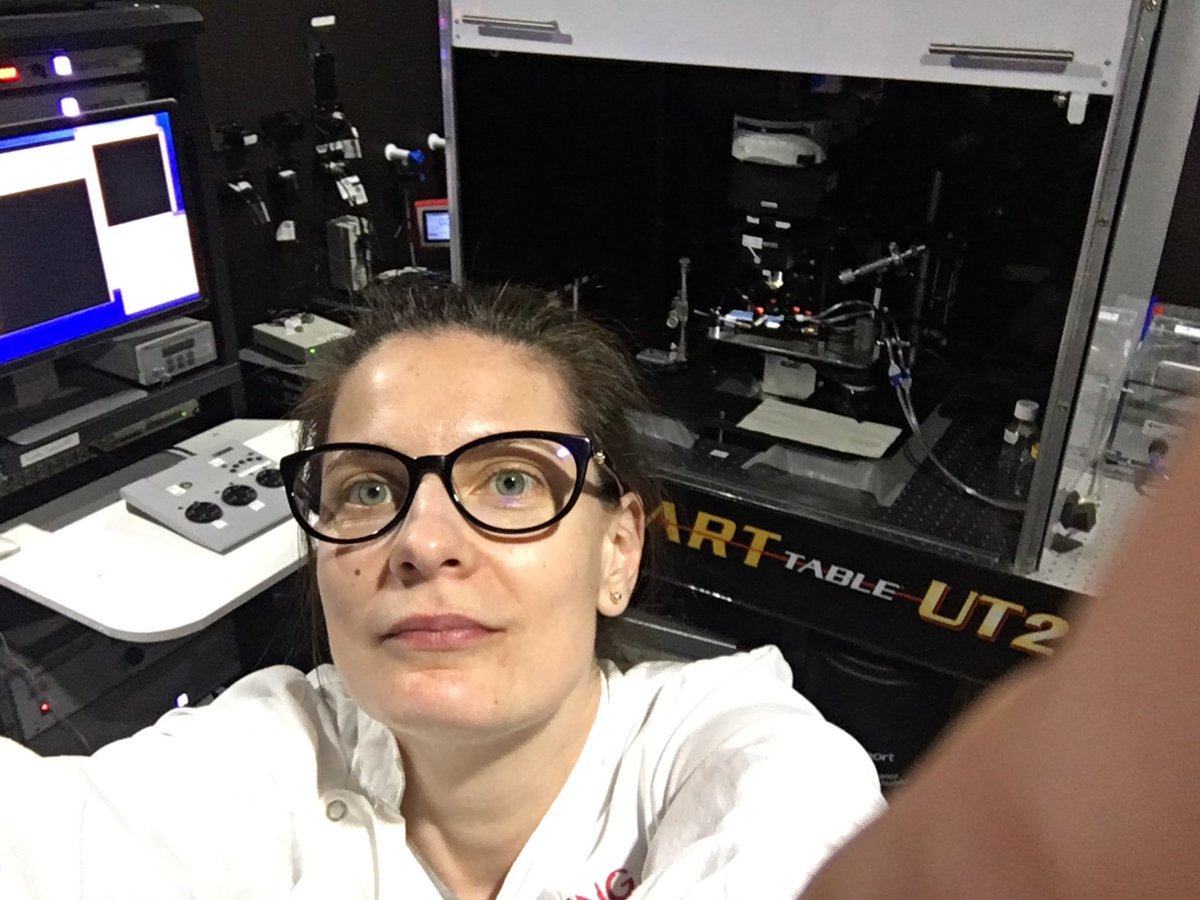Discover and read the best of Twitter Threads about #plasticity
Most recents (5)
In my 1st tweetorial, I’m happy to share our preprint—my first, first author manuscript! We used @10xGenomics single-nucleus RNA-seq in a mouse model of electroconvulsive seizures (ECS) to assess activity-regulated gene expression in hippocampal #neurons. biorxiv.org/content/10.110…
Activity-regulated gene expression patterns in the #hippocampus regulate #plasticity, #learning, and #memory, and are linked to risk and treatment response for neuropsychiatric disorders. However, the cell type-specificity of these patterns is still not well characterized.
All vertebrate #brains have #parvalbumin #interneurons, but in mammals they play a critical role in the function of the #cortex. @ellie_bucher‘s debut paper in Brain Structure and Function surveys the field to tell this emerging and exciting story. rdcu.be/cni5M 

Parvalbumin equips these #neurons for sustained fast firing, synchronizing large areas of cortex to focus attention. Linked in vast networks which buzz with gamma #oscillations, their outputs target cell bodies and axons of principal neurons to control their interactions. 

Uniquely among interneurons, #perineuronal nets and #myelin anchor and stabilise the cell bodies and axons of basket cells, tightly regulating #plasticity to bind their networks into functional structures after critical periods pass. 

On #InternationalWomensDay we'd like to pause and celebrate just a small slice of the enormous contributions to science women have made here at SFI.
Read the thread below for links to some of their own favorite research papers, and a few nominated by other SFI faculty members:



Read the thread below for links to some of their own favorite research papers, and a few nominated by other SFI faculty members:




First off, these papers on #FoodWebs led by our VP for #Science, Jennifer Dunne:
[@royalsociety Proceedings B]
royalsocietypublishing.org/doi/10.1098/rs…
[@PLOSBiology]
doi.org/10.1371/journa…
...and this interview she did for @QuantaMagazine:
quantamagazine.org/with-food-webs…
#Ecology #Ecologist


[@royalsociety Proceedings B]
royalsocietypublishing.org/doi/10.1098/rs…
[@PLOSBiology]
doi.org/10.1371/journa…
...and this interview she did for @QuantaMagazine:
quantamagazine.org/with-food-webs…
#Ecology #Ecologist



Next, two papers on how humans navigate and process #information co-authored by SFI External Prof @DaniSBassett (@Penn):
[@NatureHumBehav]
nature.com/articles/s4156…
+ summary:
blog.seas.upenn.edu/studying-hunte…
[@nature]
nature.com/articles/s4156…
+ summary:
penntoday.upenn.edu/news/what-do-b…


[@NatureHumBehav]
nature.com/articles/s4156…
+ summary:
blog.seas.upenn.edu/studying-hunte…
[@nature]
nature.com/articles/s4156…
+ summary:
penntoday.upenn.edu/news/what-do-b…



Very excited to share our (@Landgraf10006, @cwbeetle, @CamZoology) @biorxivpreprint investigating reactive oxygen species as novel signals for activity-dependent structural #plasticity in the #Drosophila brain! It’s my first lead-author work! biorxiv.org/content/10.110… 

Meet Barbora Fulopova @BarbFulop, the PhD candidate at @WickingDementia @UTAS_ that is investigating how synaptic #plasticity changes in familial Alzheimer's Disease
A thread 👇
@AcademicChatter #neuroscience #medicalresearch #Alzheimers #synapse
A thread 👇
@AcademicChatter #neuroscience #medicalresearch #Alzheimers #synapse

Neuroplasticity is the brain’s ability to continuously change its neural connections, which is necessary for storing new information. This phenomenon is crucial for key processes including memory formation, skill acquisition, learning & adapting to our ever-changing environment.
Barbora is a PhD student at @WickingDementia @UTAS_. Her research focus is on understanding how brain plasticity is derived, through studying neural synapses (junctions between cells which are communication hotspots) in neurons from a 🐭model of familial Alzheimer’s Disease. 






